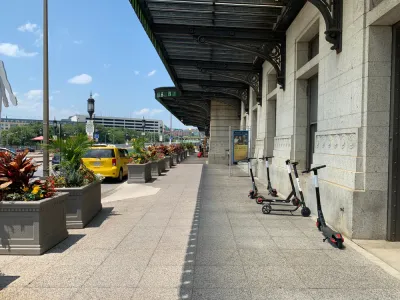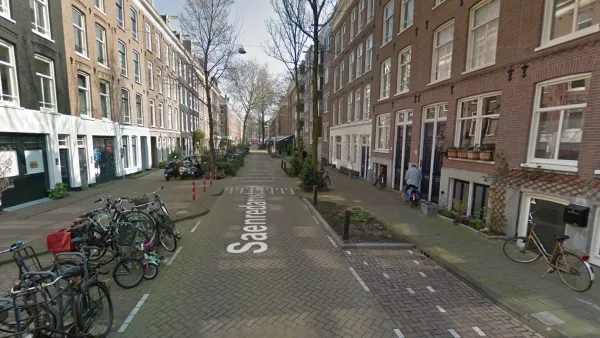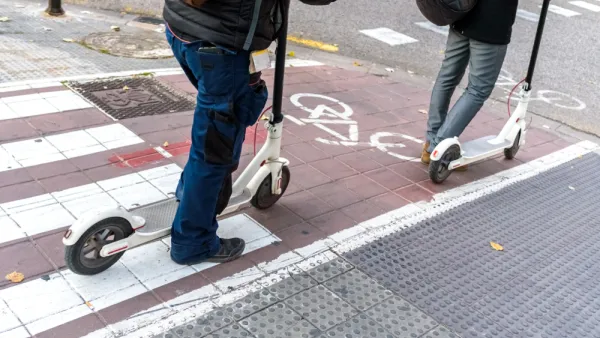The worst offenders of parking violations on the streets today aren't scooters—they're food delivery and ride-hailing drivers.

Daniel Aloi writes to share news of a new study completed by planning researchers from the University of Oregon and Cornell University, with help from Lime and the city of Denver.
“Scooter clutter” has been a concern amplified by media reports in urban areas where micromobility has entered the landscape, with large numbers of dockless scooters and shared e-bikes on city streets and sidewalks. But a recent study finds that motor vehicles are still the main offender by far when it comes to blocking access by other travelers.
The Transportation Research Interdisciplinary Perspectives journal published the study this week. The study examines five cities—Austin, Texas; Portland, Oregon; San Francisco and Santa Monica, California; and Washington, D.C.—for insights into scooter, bike, and car parking behavior. Aloi explains the methodology of the study:
Researchers collected 3,666 observations of e-scooters, bikes, motor vehicles and “sidewalk objects” such as sandwich boards. Research assistants recorded parking behavior on both sides of a busy commercial corridor for three days, eight hours each day. They observed parked cars, scooters and bicycles, as well as sidewalk furniture including advertising, construction materials and sidewalk-mounted elevator or stair-access doors.
And the findings:
The study found that parking noncompliance rates across the five cities were far higher for motor vehicles (24.7% of 2,631 motor vehicles observed) than for micromobility vehicles (0.8% of 865 scooter and bike observations).
As noted by Aloi, most of the car parking noncompliance was generated by food delivery services and ride-hailing companies.
FULL STORY: Study explores micromobility, improper parking in 5 cities

National Parks Layoffs Will Cause Communities to Lose Billions
Thousands of essential park workers were laid off this week, just before the busy spring break season.

Retro-silient?: America’s First “Eco-burb,” The Woodlands Turns 50
A master-planned community north of Houston offers lessons on green infrastructure and resilient design, but falls short of its founder’s lofty affordability and walkability goals.

Delivering for America Plan Will Downgrade Mail Service in at Least 49.5 Percent of Zip Codes
Republican and Democrat lawmakers criticize the plan for its disproportionate negative impact on rural communities.

Test News Post 1
This is a summary

Test News Headline 46
Test for the image on the front page.

Balancing Bombs and Butterflies: How the National Guard Protects a Rare Species
The National Guard at Fort Indiantown Gap uses GIS technology and land management strategies to balance military training with conservation efforts, ensuring the survival of the rare eastern regal fritillary butterfly.
Urban Design for Planners 1: Software Tools
This six-course series explores essential urban design concepts using open source software and equips planners with the tools they need to participate fully in the urban design process.
Planning for Universal Design
Learn the tools for implementing Universal Design in planning regulations.
EMC Planning Group, Inc.
Planetizen
Planetizen
Mpact (formerly Rail~Volution)
Great Falls Development Authority, Inc.
HUDs Office of Policy Development and Research
NYU Wagner Graduate School of Public Service





























